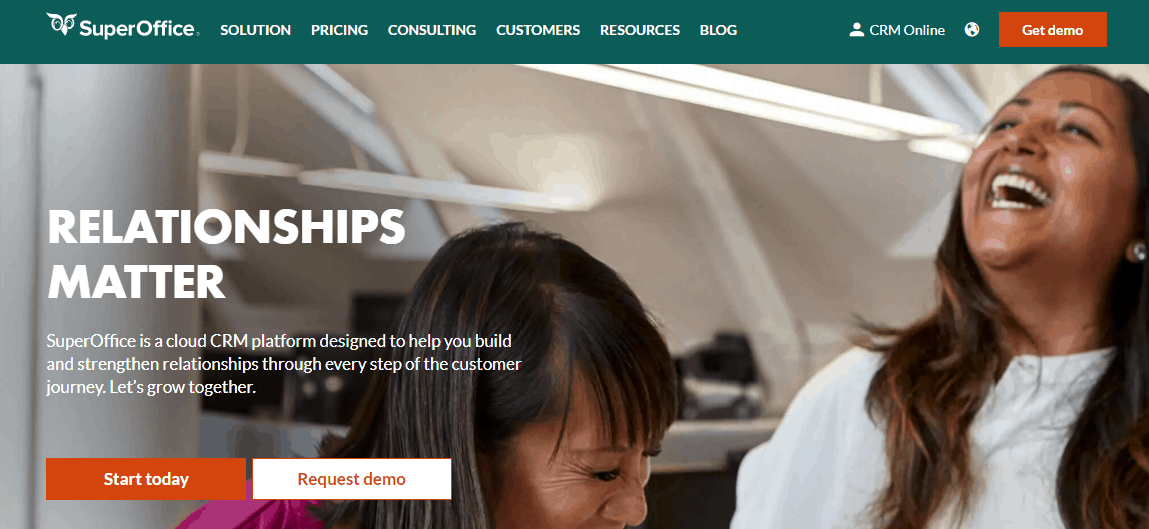You have worked on the design, the copy, and the content of your business website. But have you given any thought to improving the customer experience of your site? If you haven’t, then it’s time to work on your website’s customer experience.
Today, consumerism is not as it was a few years ago.
Statistics show that 86% of buyers are willing to pay more for a better customer experience. And, your business website is probably one of the first experiences that users will have with your brand. Hence, you ought to work on it more. Customers always have more questions about services or a product, and you don’t want to end up with ‘walls of text’ on your site or blog.
One of the easiest ways to provide them with more info, in a non-obtrusive way is to have a FAQ plugin (https://www.onlinemarketinggurus.com.au/faq-schema-plugin) installed. This one also may show additional results from your site on Google results, to expand your visibility.
Let’s look at some useful tips that can help you create a strong customer experience on your business website.
1. Make Your Website Load Lightning-Fast

Did you know the consequences of a slow-loading website? A one-second delay in your website can:
- Reduce your page views by 7%
- Decrease customer satisfaction by 16%
- Reduce conversions by 7%
And, if you think your website is fast-loading, then think again. A survey done on internet users reveals that 73% of consumers have experienced websites that are too slow to load.
But why does a small difference in website load speed have such a huge impact on your metrics? This is because consumers today are very impatient and have very low attention spans.
Consumers don’t want to waste even a single second extra. If your site loads slowly, not only does it start your customer journey on a bad note, but it can also lead to increased customer churn. If your website takes time to load, users will immediately move on to visit your competitors’ websites.
Another factor to think about is that website load speed is considered as one of the most important ranking factors by Google. So, if your website speed is low, Google won’t rank your website on top.
Here are a few ways to reduce your website’s load speed:
- Compress the images on your business website before uploading them to the CMS. This will drastically increase your site speed.
- Use browser caching to enable the static loading of your website pages.
- Minify JS and CSS files on your website.
- Use Content Delivery Networks (CDNs) to distribute the load while delivering your website content.
- Use Google’s Page Speed Insights tool to analyze the desktop and mobile load speed of your website. The free tool also suggests useful improvements for increasing the speed and performance of your business site.
2. Personalize the Experience

No one likes a one-size-fits-all experience today. If some brand or business specifically addresses your concerns, then you will automatically gravitate towards it more than other brands that generally speak to the masses.
Hence, personalization is an absolute must for your business website. Even if your business caters to very specific demographics, every customer of yours will not be the same. So, the personalization of the website and tending to every customer segment specifically will yield a much better ROI.
- Optimize your landing pages based on the location or any other demographics. You can also consider having different landing pages for different customer segments. You can tweak the imagery, the copy, and the calls to action in such a way that each landing page best caters to the needs of each of these segments.
- Optimize website push notifications and pop-ups based on the customer journey stage. The messaging for a user who is visiting your website for the first time can be different from the messaging for a user who has visited your website a few times before.
- Personalize content and product recommendations so that users are impressed by your customer experience. Offering personalized product recommendations can help you increase your average order value. Offering better content recommendations will reduce your bounce rate and increase your brand affinity.
Using a powerful Customer Relationship Management (CRM) tool like SuperOffice can completely transform your website performance by helping you provide ultra-personalized experiences to your users.

Using SuperOffice, you can gather all your customer data in a central place. Your users might interact with your brand through various channels such as emails, social media, website live chat, etc. Using SuperOffice, you can consolidate all this information and segment your customers into different target lists.
Using SuperOffice to create customer segments can be extremely beneficial for personalizing your website’s customer experience. Hence, this tool is something that you must try!
3. Incorporate Live Chat
Offering premium customer support is one of the crucial elements of a good website’s customer experience transformation. It is vital in ensuring users feel heard and supported in real time. Visitors landing on your business website might have numerous questions on their minds. And integrating live chat into your website can be a brilliant way to answer their queries and reduce the bounce rate.
A live chat option ensures that all the user queries are instantly answered, and thus the user will form a positive impression of your brand.
This will ultimately lead to increased conversions and revenue for your business.
You can also use other customer support options such as AI chatbots and co-browsing to make your website’s customer experience even better.
4. Build Trust With Social Proof

Did you know that 88% of people trust other users’ reviews as much as personal recommendations?! Hence, social proof has the potential to completely change the users’ point of view towards your website. This forms an important part of your customer experience.
When a new visitor lands on your business website, you need to gain their trust in some way. Without this trust, it is difficult to build a long-lasting relationship with your users. This is where social proof plays a pivotal role.
Using social proof, you can put trust-building factors on your site and ensure that the user’s buyer journey starts on the foundation of trust.
To display social proof on your business website, you can use factors such as customer testimonials, reviews, and ratings on your homepage. You can also put up customer success stories and video interviews. Trust badges can also help you with gaining the trust of your site visitors. Case studies also work great as social proof.
Over to You
Customer experience has become more significant, now more than ever. Hence, if you want to establish your authority in the industry, generate more leads, and retain more customers, then you must take the initiative starting now. Use the tips provided in this post to start working on your website’s customer experience and maximize your ROI.
